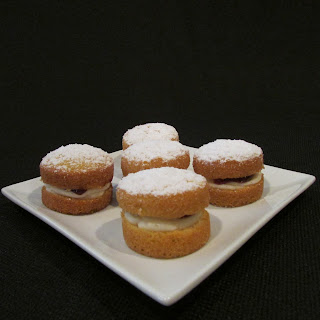What the chocolate chip cookie is to America, Amaretti are to Italy - a classic cookie. The Lombardy region of Saronno in Italy is the place of origin for this staple cookie. "Amaro" refers to "bitter" as in almonds. The bitter almond was the type of nut first used in the making of this cookie, circa 1925. It is still so in most of Italy, although in America, as in other countries, the bitter almond is banned due to its poisonous nature when raw. In America the sweet almond is used instead.
If you love almonds, notably marzipan, then you will adore amaretti. Should I also mention the French Macaron? (Did you know it is originally an Italian invention?). Its shell is primarily made of ground almonds - a similarity between these two confections.
The amaretti's crackled and sugar-dusted exterior are its signature feature. What causes the crackled texture? It is in the science of the ratio of egg whites to almond/sugar mixture. A fine coating of castor sugar (that's fine sugar in the US) followed by confectioner's sugar before baking is key to the final texture of the cookie.
Finding amaretti in the US can be a little difficult. You can find the crispy-type amaretti more easily than the softer version. I prefer the softer-textured type, as it is reminiscent of marzipan.
This cookie is also gluten-free, but it in no way compromises taste and texture. This is a divine cookie!
See my website for details and pricing: http://www.christineagold.com.
Don't miss this Italian treat!
Sweetly,
Christine
Finding amaretti in the US can be a little difficult. You can find the crispy-type amaretti more easily than the softer version. I prefer the softer-textured type, as it is reminiscent of marzipan.
This cookie is also gluten-free, but it in no way compromises taste and texture. This is a divine cookie!
See my website for details and pricing: http://www.christineagold.com.
Don't miss this Italian treat!
Sweetly,
Christine







